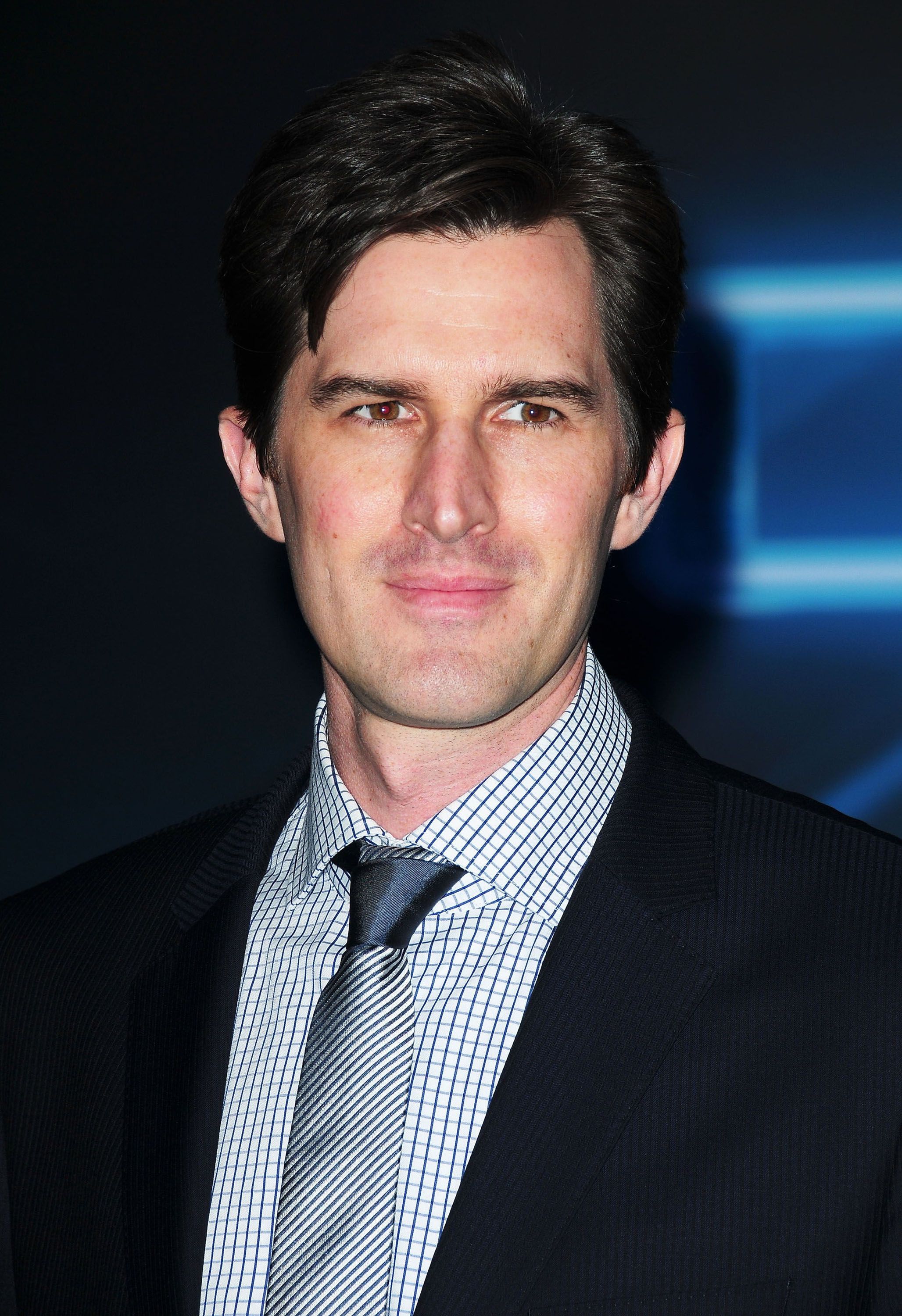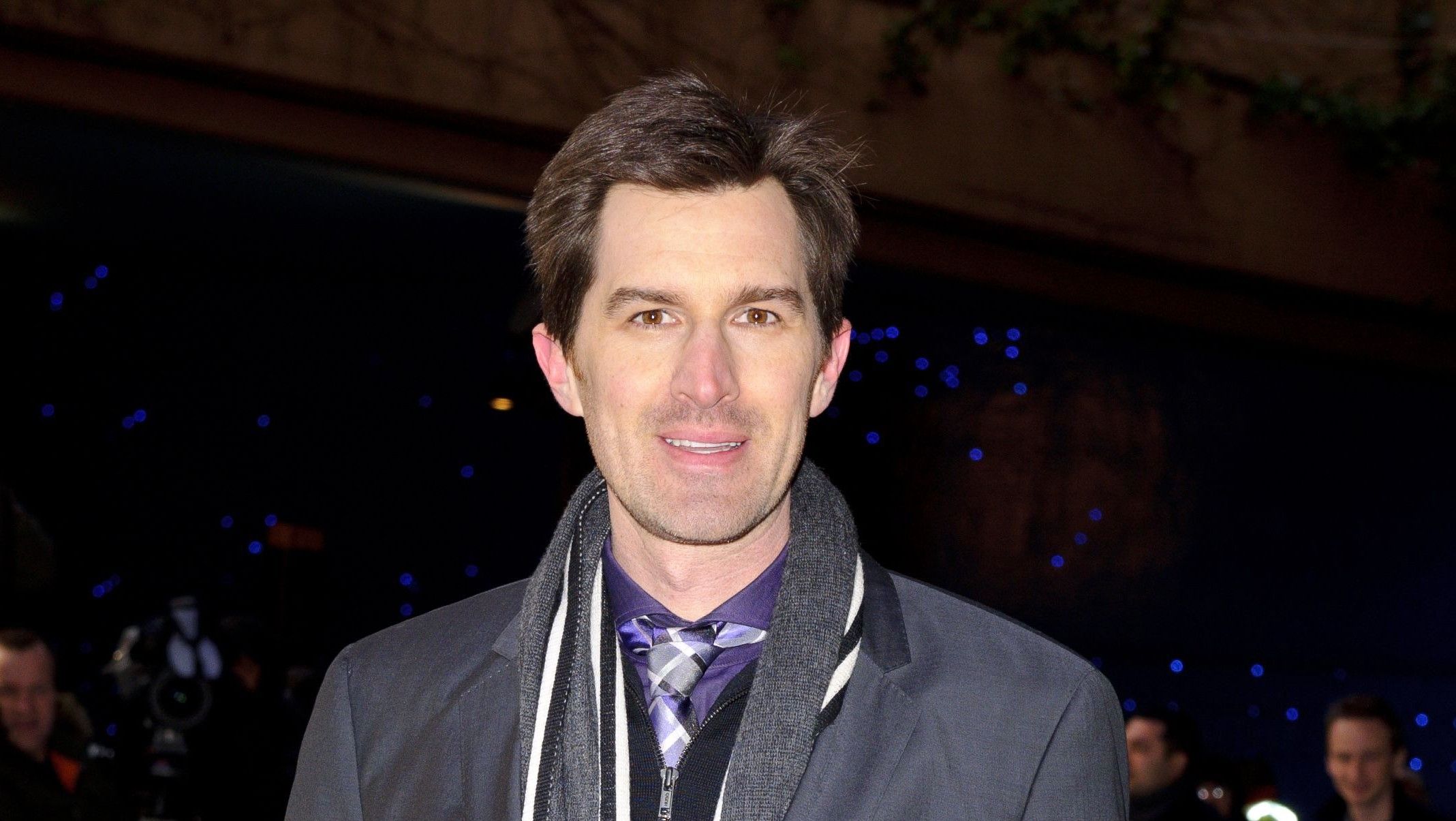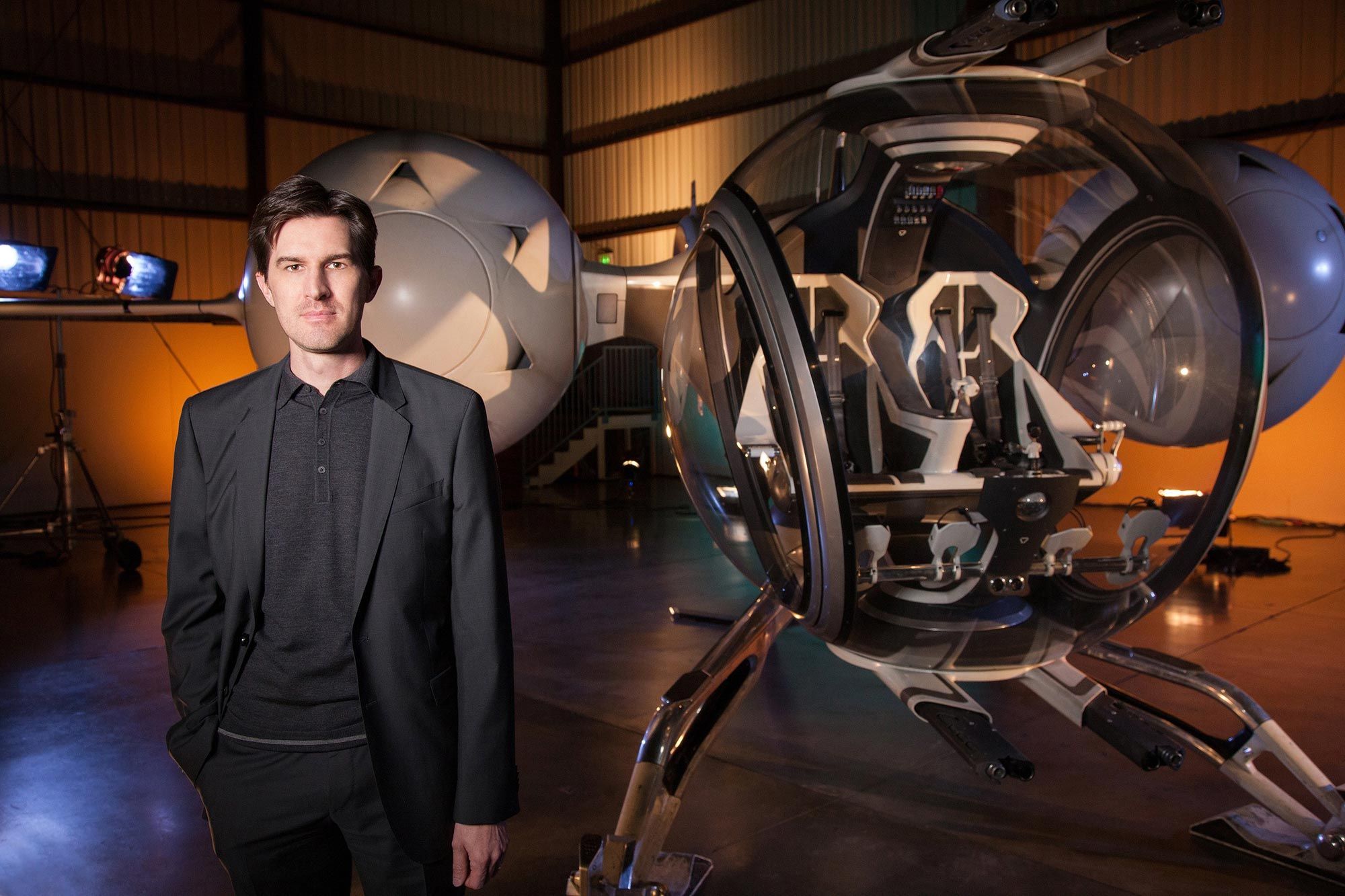Have you ever wondered what truly shapes a creative mind, especially one behind some of today's most visually striking films? When we talk about "Joseph," there are, you know, many notable figures across different areas, from historical individuals mentioned in ancient texts to those making strides in modern healthcare systems, like the details you might find about facilities such as the Universidad Autonoma de Guadalajara or even Saint Joseph Health System. But today, our focus is really on a different Joseph, one who has made a very significant mark in the world of visual storytelling: Joseph Kosinski.
It's pretty interesting, isn't it, how someone's early studies can lead them down a path you might not expect? Joseph Kosinski, the director known for his sleek, often futuristic movies, actually has a background that's quite unique for a filmmaker. His films often feature stunning visuals and a strong sense of design, and many people might wonder where that distinct style comes from. It's almost as if his educational journey laid the groundwork for the kind of stories he loves to tell.
So, we're going to take a closer look at Joseph Kosinski's education, exploring the specific academic institutions he attended and the fields of study he pursued. We'll see how these experiences, in a way, molded his approach to filmmaking, giving him a perspective that sets his work apart. It's a bit of a deep dive into how learning can truly influence a person's creative output, you know, especially in a field like movie making.
Table of Contents
- Joseph Kosinski: A Brief Look
- The Early Years: Stanford and Mechanical Engineering
- Columbia University: Architecture and Visual Design
- From Academia to Advertising: Honing His Craft
- Directorial Debut and the Influence of His Education
- Kosinski's Signature Style: Where Education Meets Art
- Why His Background Matters to Filmmaking
- Beyond the Classroom: Continuous Learning and Innovation
- Frequently Asked Questions About Joseph Kosinski's Education
Joseph Kosinski: A Brief Look
Joseph Kosinski is a film director and producer, widely recognized for his visually compelling and often technologically advanced movies. He has a knack for creating immersive worlds that really draw you in. His work often features a strong sense of realism combined with futuristic elements, which is a pretty cool combination. He's a creative force who brings a distinct vision to every project, and that vision is very much tied to his early learning experiences.
Personal Details & Bio Data
| Full Name | Joseph Kosinski |
| Occupation | Film Director, Producer |
| Known For | Visually striking, often sci-fi films |
| Notable Works | Tron: Legacy, Oblivion, Top Gun: Maverick |
| Birth Year | 1974 (approximate) |
| Place of Birth | Marshalltown, Iowa, USA |
The Early Years: Stanford and Mechanical Engineering
Before he was directing big-budget movies, Joseph Kosinski was, you know, hitting the books at Stanford University. He pursued a degree in Mechanical Engineering, which might seem like a rather unexpected choice for someone who would later become a celebrated film director. But, in a way, this foundational education in engineering gave him a unique perspective. It taught him about systems, how things work, and the principles of design and structure. It's really a very analytical field, and that kind of thinking, you know, can be applied to many different areas.
During his time at Stanford, Kosinski was exposed to rigorous problem-solving and a deep understanding of physical principles. This wasn't just about building machines; it was about understanding the mechanics of how things interact in the world. This kind of education, in some respects, instills a methodical approach to challenges, which is pretty useful whether you're designing an engine or planning a complex film sequence. He was, like, learning the very basics of how things are put together, which is something that surely informed his later creative endeavors.
The engineering background also likely fostered a strong appreciation for precision and detail. When you're dealing with mechanical systems, accuracy is absolutely key. This focus on getting things just right, you know, down to the smallest component, is a trait that you can pretty much see reflected in the intricate visual worlds he creates in his films. It's a bit like building a very complicated machine, but instead of gears and levers, it's about light, camera angles, and digital effects.
Columbia University: Architecture and Visual Design
After his engineering studies at Stanford, Joseph Kosinski went on to Columbia University, where he attended the Graduate School of Architecture, Planning and Preservation (GSAPP). This was a rather pivotal step in his educational journey. Here, he shifted from the purely mechanical to the very much aesthetic and spatial. Studying architecture, you know, is all about designing spaces, understanding light, form, and how people interact with their surroundings. It's a really visual discipline, and it requires a strong sense of composition and scale.
At Columbia, Kosinski would have immersed himself in architectural theory, design principles, and the use of advanced computer graphics for visualization. This is where his engineering mind met the world of artistic expression. Learning to create compelling visual representations of structures and environments is a pretty big part of architectural education. This experience, arguably, gave him a sophisticated understanding of visual storytelling, even before he picked up a film camera. It's all about creating a sense of place, after all.
The skills he picked up at Columbia, particularly in computer-generated imagery (CGI) and digital design, were very much at the forefront of technology at the time. This kind of specialized knowledge gave him a distinct advantage later on. He was learning how to build worlds, not just on paper, but virtually. This dual background in engineering and architecture is quite rare for a filmmaker, and it really explains a lot about his signature style. He was, in a way, preparing to construct cinematic universes.
From Academia to Advertising: Honing His Craft
After completing his studies, Joseph Kosinski didn't immediately jump into feature films. Instead, he spent a significant amount of time directing commercials and short films. This period was, you know, very crucial for him to really hone his craft. Advertising is a pretty demanding field that requires you to tell a compelling story in a very short amount of time, often with striking visuals. It's a great training ground for visual directors, actually.
Working in commercials allowed him to experiment with advanced visual effects and cutting-edge digital techniques. He could, for instance, push the boundaries of what was possible with CGI on a smaller scale, which is pretty important before tackling big Hollywood productions. This practical experience, combined with his academic background, made him a very unique talent. He was, basically, putting all that theoretical knowledge into real-world application, learning how to manage teams and budgets, too.
Many of his early commercial projects gained significant attention for their innovative visual style and technical prowess. These weren't just ads; they were, in a way, mini-movies that showcased his ability to create immersive worlds and dynamic sequences. This period was, you know, vital for him to build a portfolio and gain the confidence of producers and studios, demonstrating that he could translate his architectural and engineering vision into captivating moving images. He was, quite literally, building his reputation one visually stunning project at a time.
Directorial Debut and the Influence of His Education
Joseph Kosinski's big break came with "Tron: Legacy" in 2010. This film was, in a way, the perfect vehicle for his unique talents. It was a movie that relied heavily on visual effects, digital environments, and a very distinct aesthetic. His engineering background surely helped him understand the technical complexities of such a production, while his architectural training allowed him to design the sleek, neon-lit world of the Grid with incredible detail and spatial logic. It's a movie that really shows off his strengths.
The way he approached the visual design of "Tron: Legacy" was, you know, pretty much like an architect designing a building. Every element felt considered, from the light cycles to the digital landscapes. This attention to spatial coherence and aesthetic consistency is a direct reflection of his architectural education. He wasn't just creating cool images; he was constructing a believable, albeit digital, world. It's really a testament to how his academic path prepared him for this kind of project.
Even in his later films, like "Oblivion" and "Top Gun: Maverick," you can see the threads of his education. "Oblivion," for example, features very clean, functional designs for its vehicles and environments, which speaks to his engineering sensibility. "Top Gun: Maverick," while grounded in reality, still benefits from his keen eye for dynamic action and precise visual storytelling. His ability to blend realism with spectacle is, arguably, a hallmark of his approach, deeply rooted in his formal training.
Kosinski's Signature Style: Where Education Meets Art
It's pretty clear that Joseph Kosinski has a very recognizable directorial style. His films often feature a striking blend of practical effects and seamless CGI, creating worlds that feel both grounded and fantastical. This approach is, you know, very much informed by his dual education. The engineering side gives him a strong grasp of physics and how things should realistically move and interact, while the architectural side provides the aesthetic sensibility to design beautiful and functional spaces. It's a pretty powerful combination, actually.
His use of light and shadow, too, is something that stands out. Architects spend a lot of time thinking about how light interacts with structures, and this knowledge clearly translates into his cinematography. He creates moods and emphasizes forms using light in a way that feels very intentional and precise. This isn't just about making things look pretty; it's about using light to tell a story and guide the viewer's eye. It's a bit like painting with light, you know, but on a very grand scale.
Moreover, Kosinski often employs a minimalist aesthetic, favoring clean lines and functional designs over excessive ornamentation. This tendency is, in some respects, a direct echo of modern architectural principles. He builds worlds that feel plausible and lived-in, even when they're set in the far future. This blend of technical accuracy and visual elegance is, arguably, what makes his films so distinctive and appealing to a wide audience. He really knows how to make things look cool and make sense at the same time.
Why His Background Matters to Filmmaking
Joseph Kosinski's unique educational background is, you know, a pretty big deal in the film industry. Most directors come from film schools or have backgrounds in theater or literature. His path, however, gives him a distinct advantage, especially when working on visually complex projects. He can, for instance, communicate more effectively with visual effects artists, production designers, and cinematographers because he speaks their language, so to speak, in terms of technical specifications and design principles. It's a very practical benefit, actually.
His engineering training also gives him a problem-solving mindset that's invaluable on a film set. Filmmaking is full of unexpected challenges, and being able to approach them with a methodical, analytical mind can save a lot of time and resources. He can, you know, often find very creative solutions to technical hurdles that might stump others. This ability to break down complex problems into manageable parts is something he likely honed during his mechanical engineering studies.
Furthermore, his architectural background allows him to think about the entire world of a film as a cohesive, designed entity. He doesn't just create individual shots; he builds environments that feel consistent and believable. This holistic approach to world-building is a key reason why his films are so immersive. He's, basically, constructing a full experience for the audience, which is a pretty cool thing to do. It's all about making the viewer feel like they are really there.
Beyond the Classroom: Continuous Learning and Innovation
While his formal education laid a very strong foundation, Joseph Kosinski's journey shows that learning is, you know, a continuous process. The film industry is constantly evolving, especially with advancements in technology. He has, apparently, remained at the forefront of these changes, always looking for new ways to push visual boundaries and tell stories. This ongoing commitment to innovation is, arguably, just as important as his initial academic training.
He's known for embracing new technologies, whether it's virtual production techniques or advanced camera systems. This willingness to experiment and adapt is, in a way, a natural extension of his engineering and design background. He sees tools and techniques not just as limitations but as opportunities to create something new and exciting. It's a bit like an inventor always tinkering with new ideas, you know, trying to improve things.
At the end of the day, Joseph Kosinski's career is a pretty good example of how diverse educational paths can lead to unexpected and very successful outcomes. His story suggests that sometimes, the best preparation for a creative field isn't necessarily a direct one, but rather a combination of seemingly unrelated disciplines that, in the end, provide a unique and powerful perspective. He really shows that learning is something you keep doing, always.
Frequently Asked Questions About Joseph Kosinski's Education
What did Joseph Kosinski study in college?
Joseph Kosinski initially studied Mechanical Engineering at Stanford University. After that, he pursued a Master of Architecture degree at Columbia University's Graduate School of Architecture, Planning and Preservation (GSAPP). So, he has a pretty strong background in both engineering and design, which is, you know, pretty unique for a film director.
Did Joseph Kosinski go to film school?
No, Joseph Kosinski did not attend a traditional film school. His formal education focused on Mechanical Engineering and Architecture. However, his architectural studies, particularly his work with computer graphics and visual design, provided him with many skills that are very relevant to filmmaking, especially in the visual effects area. He, basically, learned the visual side of things in a different kind of school.
How did Joseph Kosinski's education influence his movies?
His education has, you know, very significantly influenced his films. His engineering background gives him a strong grasp of technical details and realistic physics, while his architectural training provides a keen eye for visual design, spatial coherence, and world-building. This combination allows him to create visually stunning and believable cinematic worlds, often with a clean, minimalist aesthetic. You can really see the precision and design in all his work, actually.
Joseph Kosinski's educational journey, from the technical precision of engineering to the artistic vision of architecture, pretty much shaped him into the distinctive filmmaker he is today. His academic background gave him a very unique toolkit, allowing him to approach visual storytelling with a blend of analytical rigor and creative flair. It's a compelling example of how diverse learning experiences can truly set someone apart in a creative field. If you're curious about how other creative professionals got their start, you can learn more about diverse career paths on our site, and perhaps even discover more about how technology influences art in another article.



